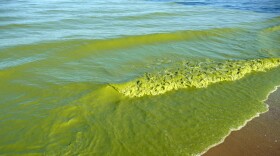-
NOAA scientists and other researcher project that cyanobacterial blooms will not be a widespread this summer in the western basin of Lake Erie.
-
Billions spent on strategies to limit nutrient pollution that don't work.
-
Long-term forecasts of less rain leads researchers to predict there will be a less severe outbreak of harmful cyanobacterial blooms. But where and when storms might hit, the number of hot days, and wind direction all complicate the forecast.
-
American and German scientists found removing phosphorus alone could trigger a change that would mean more toxins from harmful algal blooms.
-
Data from the Ohio EPA show the additional costs at water treatment plants are paid by customers, not polluters.
-
The State of Michigan's plan to reduce phosphorous runoff from farms depends largely on voluntary efforts by farmers.
-
Landsat 9 was launched in September. NASA has been checking out its systems before it turns day-to-day operations over to the U.S. Geological Survey.
-
Researchers say they expect cyanobacteria blooms on Lake Erie to be smaller than average. On a scale of one-to-ten, the severity of the blooms is forecast…
-
New research finds the annual dead zone in Lake Erie is getting a boost that makes it worse very quickly.That dead zone begins with nutrients, phosphorus,…
-
Ohio Governor Mike DeWine has rolled out a comprehensive water quality plan for his state. The plan has been named H2Ohio.A primary goal of the plan is to…
Play Live Radio
Next Up:
0:00
0:00
Available On Air Stations







